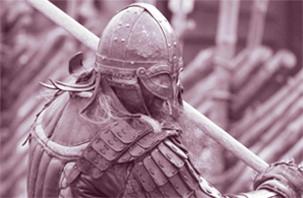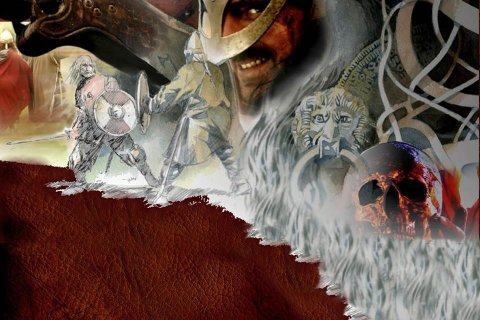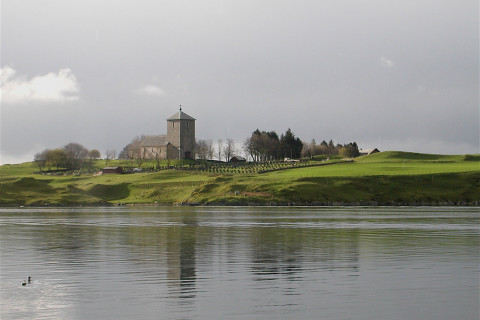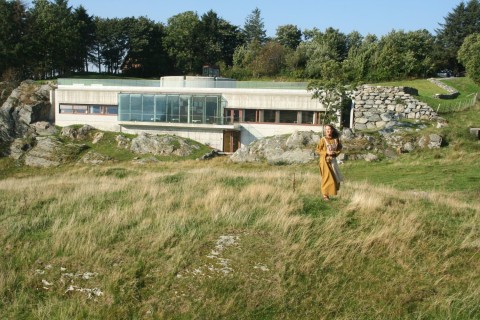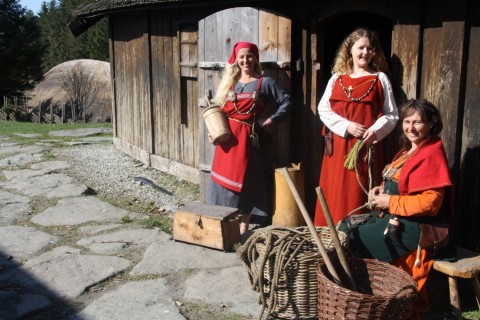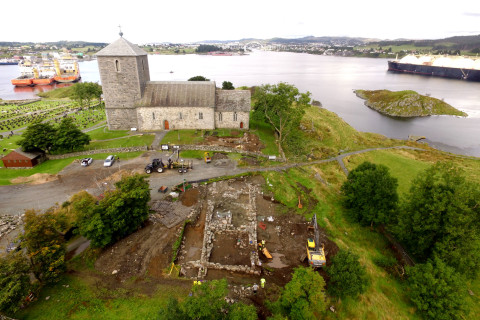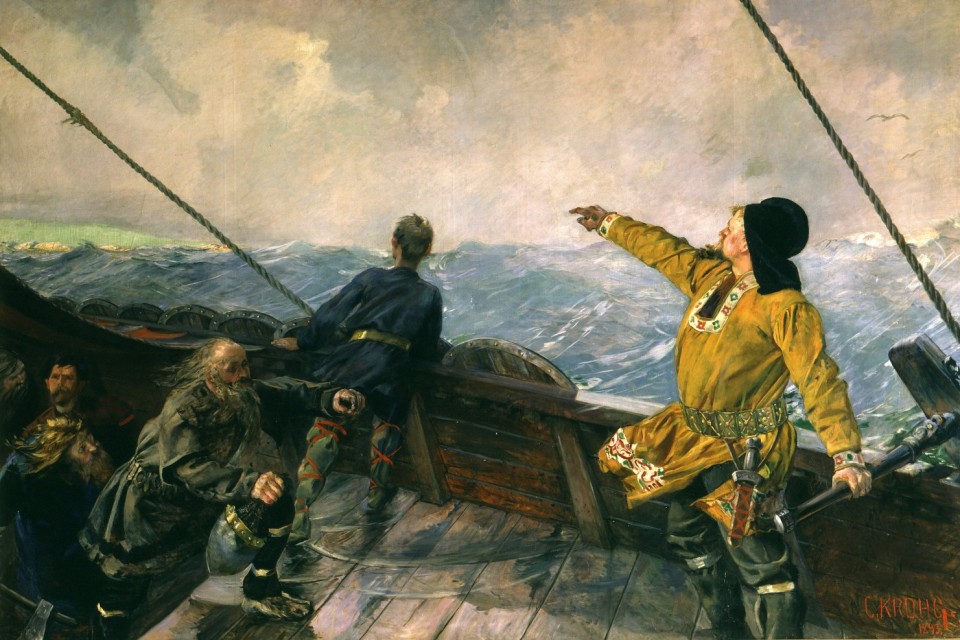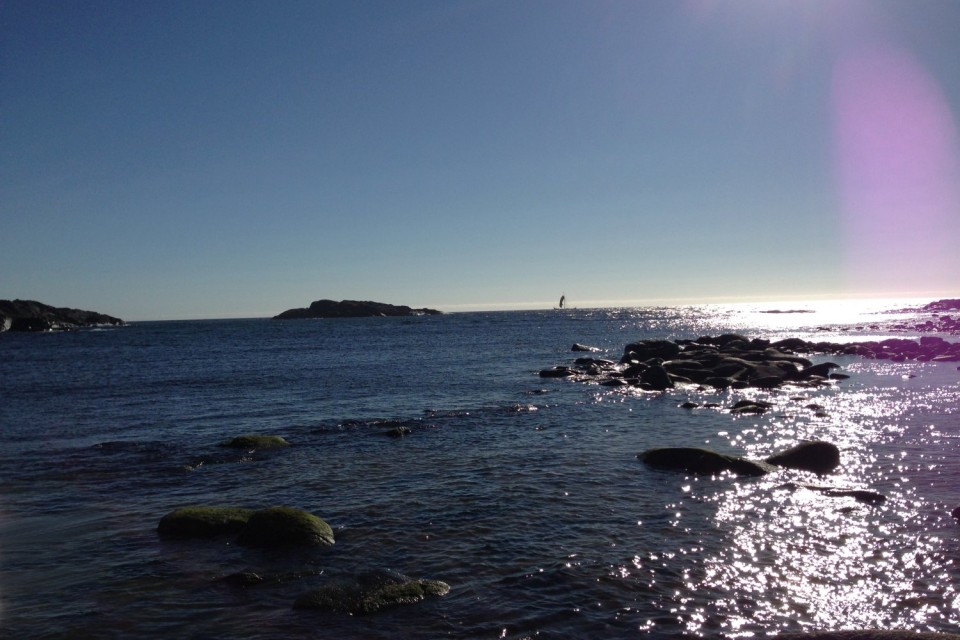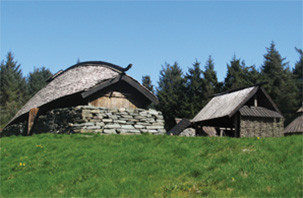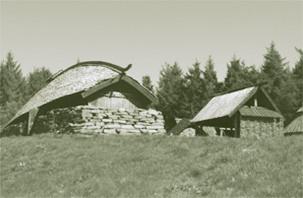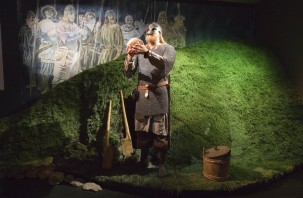Viking voyages
Text: Marit Synnøve Vea

The Viking Voyages. (Illustration Dag Frognes)
The Vikings are famous as seafarers and explorers. They sailed over greater distances than anyone else at that time; from Vinland in the west to Asia Minor in the east, and perhaps even farther. This was due both to the unique seaworthiness of the Viking ships, and the Norsemen’s skill as a sailors and navigators.
Some Viking voyages were plundering expeditions. It is these Viking raids we hear most about. But the long journeys of the Norsemen were often motivated by factors other than looting. Some travelled to be “mercenaries” for combatant rulers abroad. Other voyages were primarily trading or emigration journeys, while still others have the character of being pure journeys of discoveriy.
WHY DID THE VIKING RAIDS START?
Here are some of the most usual reasons given:
Population explosion: The Vikings’ travels were at first pirate expeditions, but gradually they developed into voyages of emigration.
Internal, political conditions: Disputes and struggles between different pretenders to the throne.
Social conditions: They were forced by poverty. (This is not very probable since those who equipped the Viking raids were rich)
Protection of trading routes: Between Scandinavia, Friesland and England.
Climate changes: Warmer climate meant that new areas could be settled, eg. Greenland.
Opportunities for trade and ravaging: Closely connected with Charles the Great’s warfare on the Continent
The Viking raids were military attacks: A kind of “guerrilla warfare” to defend themselves against the aggression of Charles the Great.

Reconstructed longhouse on a Norse settlement found in Newfoundland, Canada. (Photo Dylan Kereluk, Wikimedia Commons)
WHERE DID THE VIKINGS TRAVEL?
Swedish Vikings: Mostly eastwards, they have also been hold responsible for giving name to Russia.
Danish Vikings: Mostly to Southern England and the Continent. They established a kingdom in England called Danelaw.
Norwegian Vikings: Mostly westward. Iceland, Greenland, North America, islands in the North Sea and Northern Atlantic, Ireland, Scotland, Northern England
NORWEGIAN SEA VOYAGES
Norway is an elongated country with deep fjords and mountains that make it difficult to travel by land. But Norway has a long coastline, and for most Norwegians the sea was the main route, and the boats and ships were the most common mode of transport. This is also reflected in the fact that Norway has been named after the fairway along the coast – The North Way – and not after land areas within or after the groups of people who lived in the country.
The Danish professor Johannes Brøndsted formulates it this way in his book VIKINGENE (Gyldendal Oslo 1961):
Norway has its face turned to the West, towards the great ocean and its islands. It was first and foremost Norwegians who, more often than all other Scandinavians, both before and during the Viking era defied the powerful, ice-grey North Atlantic and its storms, even though they had no idea what they could hope to find.
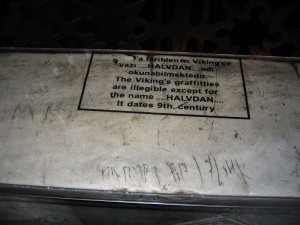
One of two runic inscriptions in Haga Sophia in Constantinople. Only the name Halfdan is interpreted. He probably belonged to the Emperor’s bodyguards called Varangians (Væringer). (Photo Wikimedia Commons)
In a way, the Norwegian, westerly area was divided into two: Firstly, a southerly area consisting of the islands of Northern Scotland, which were populated by Norwegians at the beginning of the Viking Age. From here, they went on to cover the Scottish coasts, Ireland and the Isle of Man, then all the Irish and England coastlands surrounding the Irish Sea, which in Viking times was rightly called the Norwegian Sea. From here, the Norwegians penetrated far into England from the Northwest, fighting against their Danish rivals. Subsequently, the area of the Vikings expanded with explosive speed so that it stretched to the North and then the South of France and southwards to the Mediterranean. France was the West European playground for both Norwegian and Danish Viking raids.
Later on, the northernmost part of the Norwegian area of interest encompassed the Faeroe Islands, Iceland and Greenland and the wide scope of these raids was to a large part due to the pressure that Harald Fairhair was putting on Norwegian earls, chieftains and freemen, as he ruthlessly and determinedly strove to unite Norway under one throne.
These later voyages from Norway over the North Atlantic were not plundering raids or piracy of the usual kind but were necessitated by particular circumstances and should be regarded as daring attempts to colonise foreign territories. For the areas they covered were both bleak and isolated.
Back

